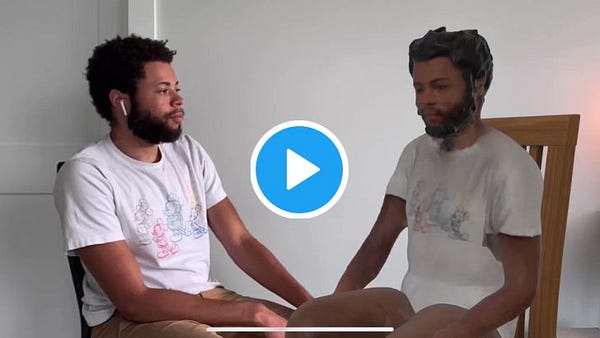Intro
GPT-3 is a phenomenal piece of technology, but explaining how it works to friends and family or sharing your best completions proves challenging.
Why is this? What is the reason that creating GPT-3 demos that awe people is hard to do?
The culprit is built into the machine itself.
GPT-3 returns text.
Don’t get me wrong, text is a extraordinary tool. There is a reason we have been using it in every single culture for 5000 years. It allows us to communicate complex ideas between each other through time and space using only a few symbols. In a way, it’s a form of telepathy.
But it’s pretty bad for demos.
For one, text is...boring. It’s dry, and requires the reader to be active and engaged to absorb the value.
Two, there are few tools to convey—emphasis—in text. Meaning can get lost easily if you don’t clarify what bold text vs normal text means to the reader.
Three, what if the completion is long? Copy/pasting a block of text is a surefire way to get people to think to themselves “Nah, too long” and move on.
Fortunately, there are a number of ways to ameliorate these issues.
Our goal will be as follows. Make the text results from GPT-3 intuitive enough to tell what the AI did, and easy to look at.
Transcending the Playground
The first step to creating a 🔥demo is to resist the urge to screencap your playground screen. No pictures, please!
Why?
Pictures don’t scale well on different devices, people can’t copy/paste onto screen readers and the playground isn’t optimized to display GPT-3 completions in a way that someone who doesn’t have experience can understand.
If you want to go the picture route, I recommend using carbon.sh. Their spacing is clear and easy to understand on a platform like Twitter (you can also export directly to Twitter), and the font has a great contrast to the background.
Try coloring the completion in a different color than the prompt.

Audio and Video, Oh My
“ A picture is worth 1000 words.”
The best GPT-3 demos I’ve seen or made have had some sort of visual component. Converting GPT-3 text to a higher fidelity medium like audio or video can help give the completions a new life.
For audio, SpeechSynthesis is built into all the popular browsers, so try using it first! Saving people the effort of reading will make your content more fun and engaging.
For video, try recording short form interactions with GPT-3 where the results are transformed into something visual, like an object or some kind of picture from the web (unsplash.com is a great repository of free pictures to use!). When I record video of live interactions with GPT-3, I use OBS to record my screen and then I use ShotCut to edit clips.
Both are free and open source!
A demo I made where I converted GPT-3 results to audio and then audio to AR
Decrease Noise on the Screen
To make a demo that lands, only show the relevant bits. Trim away any part of the prompt and completion that isn’t directly related to your demo.
If you have web dev experience, the easiest way to do this is to make a localhost website that only includes the result from GPT.
Minimize all other aspects of the design that distract from the demo.
The less you have on the screen, the better.
Make Text as Big as Possible
When recording, make your text as big as you are comfortable with. Use the percentage modifiers on browsers, increase your font sizes by more than feels natural, do whatever you have to do.
Your audience on small devices will thank you.

Sir, the font size is already 72pt!
And speaking of small devices...
A Note on Phones and Twitter Videos
My recommendation for posting GPT completions to Slack, Twitter, etc. is to cherry pick your favorite output, and don’t include the prompt (140char).
This fits on Twitter, and can be copy/pasted freely by your audience.
Twitter Video Sucks...Like Really Bad
When posting your completion demo videos to Twitter (where everyone who’s anyone in the know about GPT-3 seems to hang out apparently!), you’re kinda SoL.
Twitter video compression is just straight up awful. I’ve tried different resolutions, lengths of video, everything. It’s just bad. Don’t feel bad if your video doesn’t look amazing on Twitter, it comes with the territory.
My advice here is to cross post your 1920x1080 video to YouTube, and then link the video in the comments below.
That’s It!
Hopefully these tips help you make GPT-3 demos that will make people go “ooooh” and “nice!”.
Have fun using GPT-3, and remember, sharing is caring!



